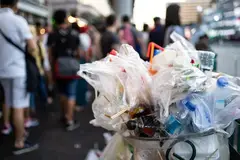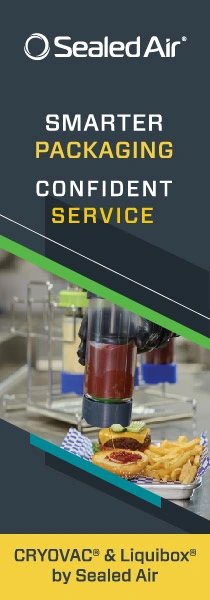Soft drinks packaging: Tariffs, regulations and demographics reshape the market
Packaging in the soft drinks industry is undergoing significant changes, driven by material adjustments in response to US aluminum tariffs, evolving regulations, and demographic shifts. Packaging Insights explores how these developments lead beverage producers to rethink everything from bottle shape to recycled content integration.
Markus Kosak, executive director drinktec cluster at Yontex, indicates that soft drinks packaging is now at the crossroads of environmental responsibility, economic efficiency, and shifting consumer habits.
“Two drivers will shape the future development: accelerated diversification due to environmental requirements and enhanced differentiation on crowded shelves,” Kosak tells us.
Tariffs prompt strategy rethink
International market researcher Innova Market Insights revealed plastic as the most widely used packaging material for soft drinks packaging, accounting for 28% of new product launches between 2020–2024. Aluminum followed closely, representing 25% of total launches.
In March, the US imposed a 25% tariff on all aluminum imported into the US. In response, beverage giant Coca-Cola considered shifting from aluminum cans to alternative packaging formats to remain competitive in terms of affordability.
Kosak shares that decisions regarding packaging cannot be made within a four-to-six-week timeframe, which is currently the case with regard to new tariff regulations.
 Plastic bottles are known for their lightweight nature and versatility in the soft drink industry.“We talk about product and marketing concepts, which cover not only packaging itself but the complete product concept and design. The impact of tariff regulations will be assessed by stakeholders, considering the share of products in specific packaging in the relevant market.”
Plastic bottles are known for their lightweight nature and versatility in the soft drink industry.“We talk about product and marketing concepts, which cover not only packaging itself but the complete product concept and design. The impact of tariff regulations will be assessed by stakeholders, considering the share of products in specific packaging in the relevant market.”
“Within this evaluation, the share of packaging costs will be a key factor. Current industry estimates indicate that packaging accounts for approximately 10–15% of overall beverage production costs,” he continues.
“Another aspect besides the costs is the conformity of the product and material. It is not only a shift from one package to another but rather determining whether the alternative is compatible with the product’s specific requirements.”
Kosak says that while the internationally leading packaging type for soft drinks is PET bottles, the US uses metal cans.
“Preliminary statements from international players show that with tariffs on aluminum, a shift from cans to PET or other plastic bottles may emerge as a likely outcome within the soft drinks sector,” he predicts.
Regulation drives innovation
Soft drinks, like other beverages, are subject to a broad range of regulations.
“Recycling regulations play an important role, such as the EU’s Packaging and Packaging Waste Regulation (PPWR), Extended Producer Responsibility, and Australia’s National Packaging Targets,” says Kosak.
“These topics will remain highly relevant, as both environmental considerations, such as circularity, and economic pressures are critical drivers in packaging design.”
Innova Market Insights 2024 survey asked consumers to identify the most important aspects of packaging when making a purchase. Sustainability emerged as a leading priority.  If aluminum cans get more expensive, some companies may shift their packaging to other materials.
If aluminum cans get more expensive, some companies may shift their packaging to other materials.
Nearly a third of respondents selected sustainability features, such as recyclability and reusability, as a key consideration. Nearly 18% prioritized the use of only original or primary packaging, and more than 15% emphasized the importance of using little or limited packaging material.
“Material reduction is a viable route to unlocking further cost-savings potential. This includes all types of packaging at the primary or secondary level. Further, the development of packaging with recycled content has been a major topic in the drinks sector for many years,” Kosak highlights.
“However, the focus is not solely on the proportion of recycled material, but also on the infrastructure supporting recycling itself. This includes, on the one hand, an extension in collection systems — in line with the PPWR requirements — and on the other hand, the continuous expansion of recycling capacities.”
Yontex provides soft drinks industry professionals with opportunities to refine bottle designs, improve material choices, and explore closed-loop packaging solutions. It also serves as a platform for material suppliers to discuss environmentally friendly packaging options.
“Efforts in this field span from bottle-to-bottle recycling initiatives to investments in cardboard recycling facilities,” says Kosak.
Smaller drink packs
According to Innova Market Insights’ survey in 2024, packaging size options, such as single serves and family value packs, emerged as one of the key purchasing considerations for soft drinks, with 26% of respondents identified packaging size as a significant factor.
Approximately 30% of consumers in North America and Asia prioritized packaging size in their soft drinks purchasing decisions, followed by Latin America (27%) and Western Europe (20%).
 Smaller-sized packaging is convenient for small households and helps prevent waste and carbonation loss.“We expect that the differentiation will continue and open the field for new innovative concepts, especially in smaller sizes. This is largely due to demographic shifts in mature markets, where the rise of single- and two-person households is fueling demand for more convenient, smaller-sized packaging solutions,” says Kosak.
Smaller-sized packaging is convenient for small households and helps prevent waste and carbonation loss.“We expect that the differentiation will continue and open the field for new innovative concepts, especially in smaller sizes. This is largely due to demographic shifts in mature markets, where the rise of single- and two-person households is fueling demand for more convenient, smaller-sized packaging solutions,” says Kosak.
The number of single-person households without children in the EU rose by 21% between 2013 and 2023, according to Eurostat, the EU’s government agency for statistics.
In the US, single-person households reached over 38 million in 2024, accounting for 29% of all households, according to the US Census Bureau. Similarly, aging populations and low fertility rates in Asia-Pacific are driving a rise in single- and two-person households, according to a UN report.
“To add one more aspect, the on-the-go consumption trend in various markets will open doors to new packaging variants. However, when considering the soft drinks market, we will always have to take into account that these products require a stable packaging with regard to the carbonation level of the product,” he concludes.











